Goetta Recipe (Cincinnati Sausage)
This post may contain affiliate links. See my disclosure policy.
These famous German-influenced sausage grain patties known as Goetta from the Greater Cincinnati area have a fantastic flavor and are an absolutely delicious addition to your breakfast! This authentic homemade Goetta recipe captures the flavor and texture that you know and love. Make a double batch while you’re at it because it freezes well!
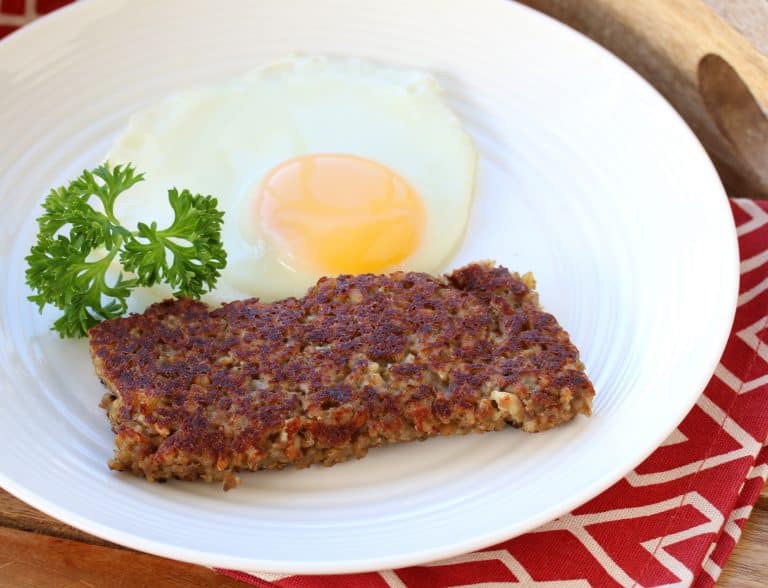
What is Goetta?
You may not have heard of goetta, but it’s famous. At least it is in Cincinnati where it’s practically a staple ingredient. So much so the people of the Greater Cincinnati area consume over 1 million pounds of it ever year. That’s 450 metric tons of goetta!
What’s more, there’s even an annual goetta festival, “Glier’s Goettafest”, that’s held every August near Newport, Kentucky and features goetta served every way imaginable. Music, dancing and other entertainment adds to the occasion of celebrating this beloved food as well as the German-American heritage of the Greater Cincinnati area.
So what is goetta (pronounced “getta”)? Goetta is a mixture made out of meat, steel-cut oats, onions and spices that is formed into sausages patties, fried, and eaten for breakfast. The dish is of German origin and the name is a derivative of the German words Grötte or Grütze (depending on the region), which translates to “groats,” but this dish is not known as Goetta in Germany.

Where Did Goetta Originate?
The concept goetta is similar to Pennsylvania Dutch scrapple, Polish kishka and Scottish haggis in that, all these originally being peasant dishes, it was a way to make the most of every part of the animal – to use up the scraps – and to make them stretch to feed the most people possible.
In the case of goetta, it was brought to the Cincinnati area over a century ago by German immigrants from northern Germany. While the version in north Germany would have been made more commonly with buckwheat, barley or rye (the grains most prolifically grown in that area), oats were substituted once the immigrants reached Cincinnati (which is the more common crop in that area). Also, the original, peasant German version would have included more animal organ parts whereas goetta is made with the muscle meat only (when the German immigrants reached the United States they found that pork here was much cheaper).
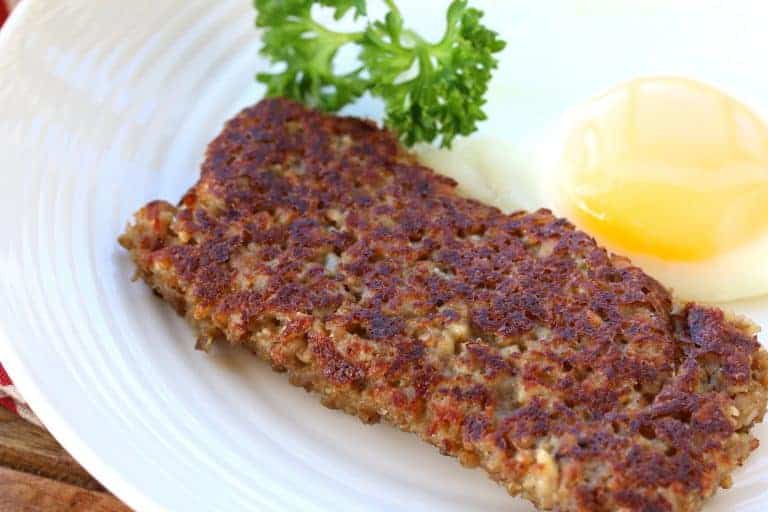
Goetta Ingredients
The primary ingredients in this goetta recipe are steel-cut oats, beef, pork, onion and garlic. The oats are simmered in beef broth for added flavor and a special selection of herbs and spices are added. There are several key seasonings that are essential to achieving the “old world” flavor that many German meats and sausages are associated with: Mace, marjoram, coriander, white pepper, cloves and ginger. Don’t omit or substitute any of these. Include all of them and once you’ve tasted the final result you’ll be very happy you did!
Serving Recommendations
Goetta’s a classic breakfast food and is usually serve with eggs, toast, fruit, etc. But you’ll also find it served in any number of other ways in Cincinnati and throughout the region: Crumbled onto nachos, pizza, in quesadillas, tacos, burritos, and sandwiches, baked in casseroles, mac and cheese and frittatas, piled onto loaded potato skins, or even goetta fried rice. In short, goetta fans are pretty serious about this stuff and once you’ve tried it you’ll understand why!

How to Cook Goetta
Yes, this can be a point of frustration. You’ll find forums online of people venting and lamenting and asking for help on how to fry goetta so that it doesn’t completely fall apart in the pan.
I’ll say it right now, it is challenging keeping the patties together when you fry them and that’s just the nature of goetta. Goetta is not a firm sausage patty. It’s a fairly soft and loose patty with a browned and crispy exterior. And reducing the amount of water won’t help, neither will adding things like bread crumbs or eggs. That said, there is a way to keep goetta from falling apart and to ensure the patties keep shape.
Pro Tips
There are 5 keys to cooking goetta so that it holds together, keeps it shape, and browns nicely:
- The first key to helping them keep shape is slicing them thickly (at least 1/2 inch thick).
- The second key is to avoid using any oil whatsoever. Oil will only make it soggier and fall apart more. Just use a dry non-stick pan over medium-high heat. Again, no oil.
- The third key is waiting until the pan is preheated over medium heat and then letting them fry long enough on both sides to firm them up a bit. Fry them for 5-8 minutes on the first side until the top changes color (it’s very light/almost white to begin with and will become a little yellower in color,) and the bottom is fully browned. Then carefully flip it and brown the other side (this side will cook faster).
- The fourth key is to avoid pushing or pressing down on the patties.
- The fifth key is to leave it alone while it’s frying. Don’t push down on it or try to move it before it’s fully browned on the bottom or it will stick. Also, do not to overcrowd the pan.
Keep in mind, after implementing each of these tips the patties still won’t be “firm” – they’re not supposed to be. Ignore the imperfections in shape or appearance, just shovel the goetta onto your fork and into your mouth and then chew it with complete satisfaction. Equipped with these 5 Keys To Goetta Success, it’s time to move on to the goetta recipe!
Goetta Recipe
Let’s get started!
Place the broth, oats, water, salt, bay leaves and marjoram in a large pot. Bring it to a boil then reduce the heat to low, cover, and gently simmer for 90 minutes, stirring occasionally, until it’s soft and the liquid is absorbed. Discard the bay leaves.
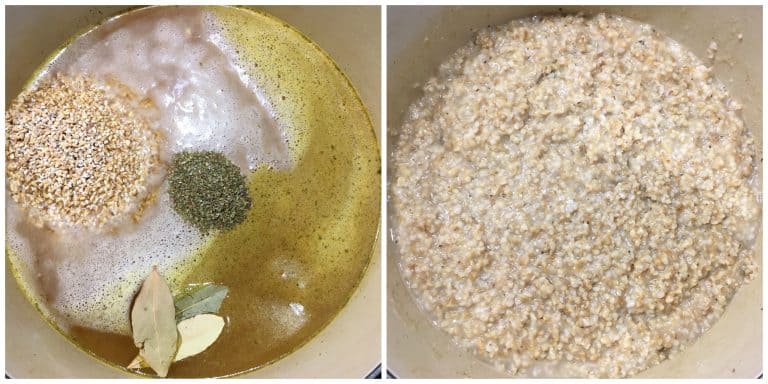
Add the meat, onions, garlic and spices. Return to a boil then reduce to low, cover and cook for another hour, stirring occasionally. If the liquid has not all been absorbed, remove the lid and continue to cook uncovered, stirring occasionally until the mixture has thickened.
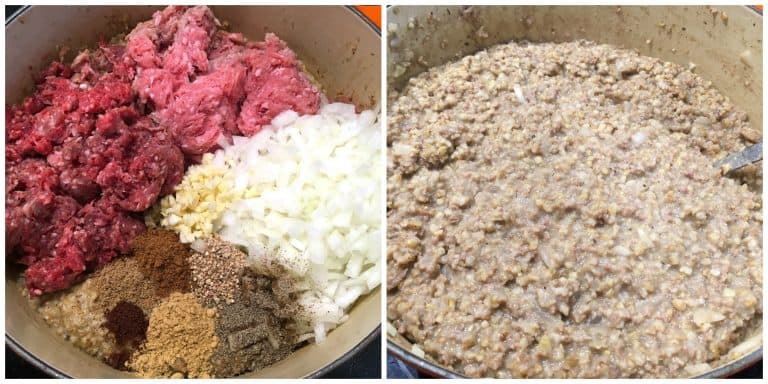
Pour and press the mixture into 2 (9×5) greased loaf pans and let cool completely. Cover with plastic wrap and refrigerate overnight.
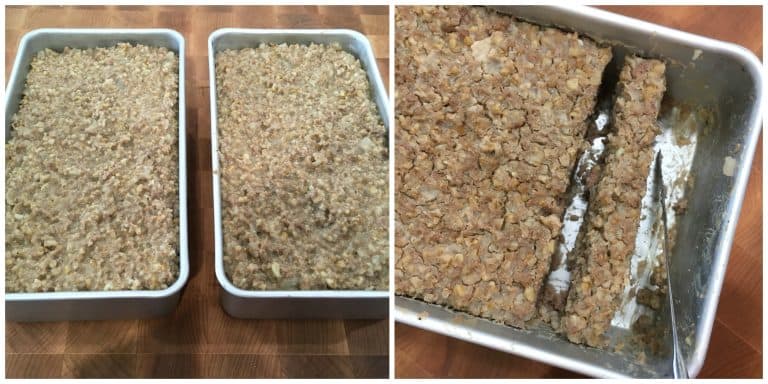
To serve, cut into thick slices, at least 1/2 inch (otherwise they’ll fall apart), and fry them in batches in a non-stick pan without any oil. Fry them on both sides for 4-5 minutes or until nicely browned. Serve immediately.
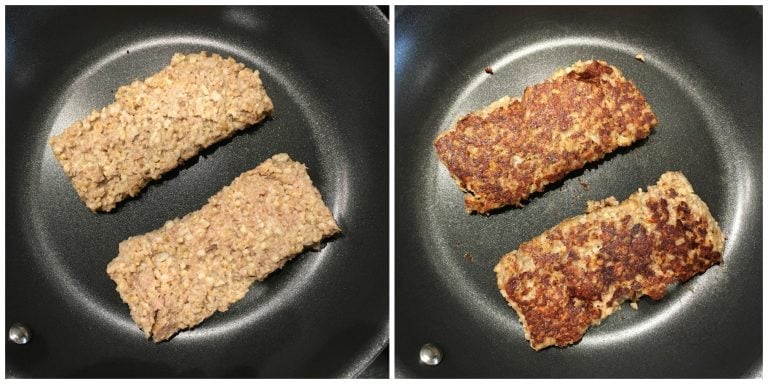
Enjoy!
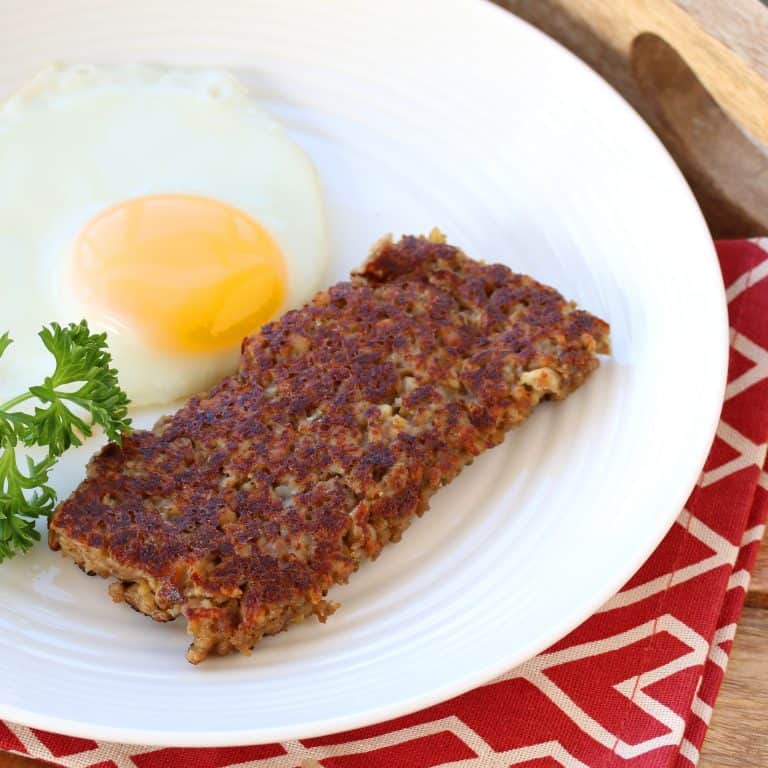
For more delicious homemade sausage recipes be sure to try my:
- Homemade Breakfast Sausage (Links or Patties)
- Italian Sausage Recipe
- Homemade Mexican Chorizo
- German Bratwurst
- British Bangers
- Smoked Cheddar Sausages
Save This Recipe
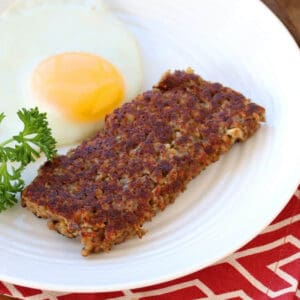
Goetta Recipe (Cincinnati Sausage)
Ingredients
- 2 1/2 cups steel-cut oats (aka pinhead oats)
- 4 cups beef broth
- 4 cups water
- 3 teaspoons sea salt
- 3 bay leaves
- 1 1/2 teaspoons dried marjoram
- 1 pound ground beef
- 1 pound ground pork
- 1 large yellow onion , finely chopped
- 5 cloves garlic, minced
- 1 teaspoon ground ginger
- 1 teaspoon ground mace
- 1/2 teaspoon freshly ground black pepper
- 1/2 teaspoon freshly ground white pepper
- 1/2 teaspoon ground coriander
- 1/4 teaspoon ground cloves
Instructions
- Place the broth, oats, water, salt, bay leaves and marjoram in a large pot. Bring it to a boil then reduce the heat to low, cover, and gently simmer for 90 minutes, stirring occasionally, until it's soft and the liquid is absorbed. Discard the bay leaves. Add the meat, onions, garlic and spices. Return to a boil then reduce to low, cover and cook for another hour, stirring occasionally. If the liquid has not all been absorbed, remove the lid and continue to cook uncovered, stirring occasionally until the mixture has thickened.Pour and press the mixture into 2 (9×5) greased loaf pans and let cool completely. Cover with plastic wrap and refrigerate overnight.
- To serve, cut into thick slices, at least 1/2 inch (otherwise they'll fall apart; I cut them inside the pan, if you invert the whole thing it will be very messy), and fry them in batches in a non-stick pan over medium-high heat without any oil. Again, do not use oil, use a dry, non-stick pan. Fry them on both sides for 4-5 minutes or until browned and crispy on the exterior. (See blog post for 5 Keys To Goetta Success.)READ THE BLOG POST FOR TIPS ON HOW TO SUCCESSFULLY FRY GOETTA.
Notes
Nutrition
Originally published on The Daring Gourmet July 18, 2018



















I’ve been looking for the “true” recipe for 71 years! My mother and her siblings called this Gritza. No doubt due to poverty, most of the ingredients were left out. What filtered down to me as ground pork, steel cut oats, and allspice seasoning. They were raised in Hamilton County, Ohio, so I know this is the true recipe. Whether I make this expand I’d version or not doesn’t matter. I now know the recipe actually exists and not my family’s figment of their imagination. BTW, I like the simple, allspice version and yes, they are a problem to cook.
Scrumptious! Thank you for this delicious recipe. I will be making it again and again.
Thank you, Maureen, I’m so glad you liked it!
Scrumptious! Thank you for this awesome recipe. I made a double batch and sliced and froze one tray. So now I can defrost and fry one slice at a time.
Thank you, Maureen, I’m so glad you enjoyed it!
Scrumptious! I will be making this again and again. Thank you for this fantastic recipe.
Thank you, Maureen, I’m so glad you enjoyed it!
Thank you love it
Thank you, Sandy, I’m so glad you enjoyed it!
My son brought home Goetta from Cincinnati and we loved it. I thought I would give this recipe a go and I found the outside was crispy but the inside had a mushy texture 😞😬. What did I do wrong? Please help. Do you cook the meat separate and then add it to the oats? Thanks for any help you can give me.
What lean % of ground pork/beef should be used? Looks great!
Hi JohnnyB, I usually use 85% lean to keep it nice and moist but you can use whichever you prefer.
I have been looking for the recipe for many, many years. Growing up, my grandpa made this or something similar. He was from Northern Germany and called it ganuck or kanuck (from what I remember) I think this is why I could not find it. He was a butcher and I believe used animal organs like you wrote about. I want to say part of the pig’s head/parts (Does that sound possible?) When he passed away, the recipe went with him, I was the only grandchild who loved it. The recipe was in his head and never written down. So, I’ve been trying to remember what he had mentioned.
As I gather the ingredients,I wanted to know what type of ground beef to use. 80/20, Sirloin, Chuck? Also, with the beef broth, should I use low-sodium or regular, should it be beef stock? Should onion be minched or chopped small? I apologize for all the questions. I just want to get this right. Thank you :)
Hi Rebecca, I hope this is reminiscent of what you enjoyed growing up with your grandpa. Yes, pig’s head/parts would not have been uncommon – most parts of the animal would have been used to stretch out the meat. Any type of ground beef will work but I usually use and prefer lean. I use regular beef broth and I finely chop the onions. Happy cooking! :)
I followed the ingredients and cooking instructions (close) to a T. We all agree this recipe is awesome. As a Cincinnatian living in California for the past 25 years who loves to cook, I was always hesitant to try to make my own goetta so always froze it and flew it home after the holidays. But we got a meat grinder for Christmas and now I’ll make my own from now on. Great recipe! We ground nicely marbled country ribs for the pork portion. Used store bought bone broth maybe that helped keep the patties firm as a previous commenter noted.
Thanks so much, Peter, I’m happy you enjoyed it! And congrats on the new meat grinder!